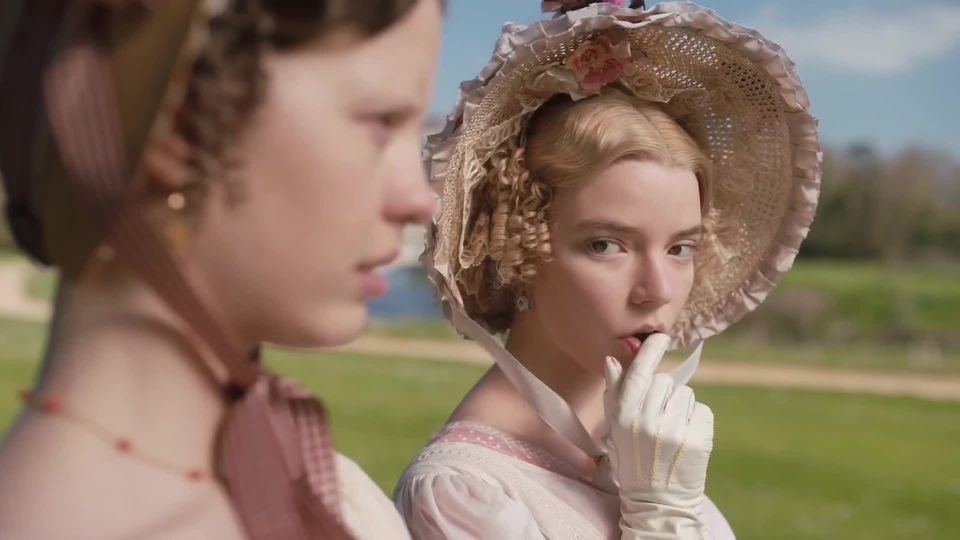revolution
Women’s hairstyles – the bloody history of short hair
Pierre-Narcisse Guerin’s Portrait of a Young Girl from 1812
© Commons
At the end of the 18th century, the Parisian wore her hair shaggy and short. This fashion hotshot played with the signs of the revolution: shortly before, thousands of women had their hair shaved before losing their heads to the guillotine.
The classic ideal prefers long women’s hair and corresponding hairstyles. And yet pictures from the late 18th century show us young women with short hairstyles that look surprisingly modern. In the ancien regime, hairstyles could not be elaborate enough. The real hair was tied with wigs and formed huge structures that were decorated with jewelry and miniatures. Even ship models could be found in the superstructure. And suddenly, barely 20 years later, shaggy short hairstyles were en vogue in France – shaggy and carelessly cut. The French Revolution was to blame. A safe distance from the years of terror, young fashion-conscious people dressed “à la victime” – like the victims.
The industrial death
The “Reign of Terror” was a nine-month period in 1793 and 1794. At that time, more than 16,000 “enemies of the state” were executed in Paris alone. The traditional craft of the executioner could not cope with these masses. Because before the revolution, every execution was an individual and elaborate spectacle. It had to be replaced by an industrial way of killing – the guillotine reigned supreme.
And that was also reflected in the fashion for short hairstyles. The victims’ hair was shaved before execution. In the Middle Ages, women were supposed to start their last journey as unattractive sinners, in the days of the guillotine it was the humiliation and the practical effect that counted: thick hair is surprisingly tough, it could prevent a clean cut. A jammed guillotine would have stopped the assembly line executions. So thousands of shaggy-haired women were sent to the scaffold.
When it then became fashionable to dress “à la victime”, Parisian women no longer had to fear being beheaded by a horde of Jacobins who would then carry their heads triumphantly through the streets on a pike. But there was also no political statement for the monarchy behind it. The fashion had politically diverse sources.
One was the sacrificial balls, where the survivors paid homage to their murdered relatives in macabre rituals. In addition, there was a revolutionary fashion, because after the revolution the men of the revolution oriented themselves to the hairstyles of the Roman busts. This style was called hairstyle à la Titus. Oddly enough, since Titus was not a republican like Brutus, but a Roman emperor.
More spectacle than politics
Both influences gave rise to a fashion for provocation that played with the thrill of terror. People liked to tie red ribbons around their necks to imitate the blood of the dead. A reverse mullet was also popular: the nape of the neck was shaved at the back, while the curls fell over the forehead at the front. During the performance, the gentlemen jerked their heads as if they were being chopped off.
Small guillotines were worn as ornaments, slightly larger models adorned the salons. “France is dancing,” wrote nineteenth-century historians. “France dances to take revenge, France dances to forget! France dances between the bloody past and the dark future, she dances! Scarcely rescued from the guillotine, there is dancing… France, still bloodied and utterly ruined, twists and turns pirouettes and twirls around”.
As you might expect, women with short hair were initially labeled as “disfigured” and “unfeminine,” but that didn’t stop the fashion revolution. In 1802, the Journal de Paris wrote that more than half of fashionable and wealthy women either had their hair cut or at least wore a wig in the style.
This way of overcoming fear was not tasteful, but it influenced fashion enormously. Because for the first time, an idea of simplicity and plainness prevailed in women’s clothing. Because the victims of terror were herded through the streets in nightgowns and underwear, the women wore simply draped dresses with no lacing and no supporting frame for the skirt.
Sources: timeline, Messy Chick, Fashion Encyclopedia
Also read:
Jane Austen’s wild sister – the voyage of “John Bull”
The warlord princess who flooded the west with heroin
The Black Widow – Linda Calvey was Britain’s most notorious gangster bride
Beautiful, paranoid and infinitely cruel – Griselda Blanco was the queen of cocaine
Stalin’s sniper lady – the German snipers were powerless against Lyudmila Pavlichenko





